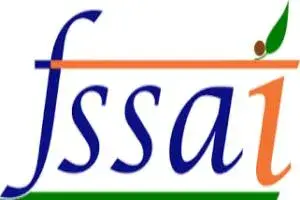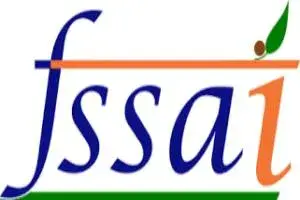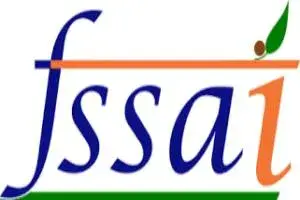PRE PACKAGED FOOD PRODUCTS AND LABELLING REGULATIONS
FANTASY GAMING IN INDIA.
Anti-Corruption and Anti-Bribery Policy and Compliances- India.
Environment Impact Assessment for Projects- India.
PRE PACKAGED FOOD PRODUCTS AND LABELLING REGULATIONS

By Lucy Rana and Rupin Chopra
The FSSAI notified the Food Safety and Standards (Labelling and Display) Regulations, 2020 on November 17, 2020[1]. The Regulations have notified a change in the display of nutritional information and calculation of nutrients for the pre-packaged products.
The Packaged Food companies have approached the Food Safety Authority of India (FSSAI) and requested that food items like cookies, confectionaries, juices to be kept out of the front of pack labeling regulations[2] as requested by the companies. The food companies have alleged that packaged food items based on their fat sugar and salt content as proposed in the Traffic Labelling Regulations, 2019 should be delinked from the new FSSAI Labelling Regulations, 2020.
BACKGROUND
Currently, most of the packaged food companies print nutrition details of the contents, including their recommended daily values, at the back of the package.
CHANGES INTRODUCED
The legislation has mandated the packaged food companies to label high fat, sugar and salt contents in the front of the package itself. The food labels will also declare, per serve percentage contribution to RDA (recommended dietary allowance) on the front of the pack.
This can be explained through a comparison drawn considering the various products:
AIM OF THE NEW LEGISLATION:
- To manage the Recommendatory Dietary Allowance of the products for the consumers. The RDA is ceiling on the amount of fat, sugar, sodium component in the product to maintain the healthy life.
- The new regulation has under Regulation 3(b)[3] has prescribed the limits of the nutrients, whereby the definite limits act a restraint on the companies to maintain the product as healthy.
- The display of all types of salt, sugar and fat is the new component given by Regulation 3 (a).
- The display of sodium and cholesterol which was only claimed in the old regulation of 2011 has been mandatory for the companies.
- The display of dietary fiber has been made compulsor
THE REGULATION HAS BEEN DEFINED AS FOLLWS:
According to Food Safety and Standards (Labelling and Display) Regulations, 2020[4]:-
| S.No. | Regulation | Provision |
| 1. | Regulation 3(a) | The new regulations have emphasized the division of information into:
· Sugar- means all monosaccharides (glucose, fructose, etc.) and disaccharides (maltose, sucrose, lactose, etc.). · Added sugar- means monosaccharides and disaccharides added to foods and beverages · Fat- means total lipids including saturated fat, monounsaturated fat, polyunsaturated fat and trans fat. o ‘Saturated fats’ means fatty acids without double bonds. o ‘Monounsaturated fats’ means fatty acids with one cis double bond. o ‘Polyunsaturated fats’ means fatty acids with cis-cis methylene interrupted double bonds. o ‘Trans Fat’ means all the geometrical isomers of monounsaturated and polyunsaturated fatty acids having non-conjugated, interrupted by at least one methylene group, carbon-carbon double bonds in the Trans configuration · Dietary Fiber (not lower than 3)- means carbohydrate polymers with a degree of polymerization (DP) not lower than three, which are not hydrolysed by the endogenous enzymes in the small intestine of humans and the same consists of one or more of- · Edible carbohydrate polymers naturally occurring in the food as consumed; · Carbohydrate polymers, which have been obtained from food raw material by physical, enzymatic or chemical means; · Synthetic carbohydrate polymers. · Nutrients |
| 2. | Regulation 3(b) | Every product shall display the nutritional information for 100 g or 100 ml or per single consumption pack of the product and per serve percentage contribution to recommended dietary allowance which is calculated on the basis of 200Kcal energy as:
· 67g total fat · 22 g saturated fat · 2 g trans fat · 50 g added sugar · 2000 mg of sodium (5g salt) requirement for average ADULT PER DAY. |
STEPS TAKEN BY RENOWNED FMCG COMPANIES
The new amendment makes it mandatory for the companies to display requirement which were not present in the old nutritional information in order to manage its dietary recommendatory allowance which includes-Sugars and Added sugar and Fat, Fatty Acid, Trans Fat, Poly Saturated Fats and all other types of Fats and Cholesterol.
1-Product 1
| S.No. | Nutritional Information | Old Regulations | New Regulations | Prescribed Limit |
| 1. | Energy | 523kcal | 462kcal | – |
| 2. | Total Carbohydrates
Sugar |
29g
14g |
42.81kcal
8.08g |
50g |
| 3. | Total Fat
Saturated
Monosaturated Fatty Acids
Fatty Acids
Polyunsaturated Fatty Acids
Trans Fatty Acid |
39g
–
–
–
–
– |
28.41g
12.58 g
3.19
8.82
0 g
– |
67g
2g |
| 4. | Dietary Fiber | – | 8.86g | – |
| 5. | Proteins | 14g | 8.86g | – |
| 6. | Sodium | 555mg | 671mg | 2000mg |
| 7. | Cholesterol | – | 0mg | – |
2-Product 2
The Product 2 has classified nutritional information and showcased the nutrients information in per serving form and also to include the percentage of per serving in it, [7]which is an essential requirement according to new regulation.
| S.No. | Nutritional Information | Old Regulation | New Regulations | Prescribed Limit |
| 1. | Energy | 402kcal | 427kcal | – |
| 2. | Protein | 9.2g | 8.0g | – |
| 3. | Carbohydrate
Total Sugar
Sugar Fiber |
58.9g
1.2g
– |
63.5g
|
50g |
| 4. | Total Fat
Saturated Fat
Trans Fat |
14.4
–
– |
15.7g
6.8g
0.13g |
67g
22g
2g |
| 5. | Sodium | – | 1172.3mg | 2000mg |
| 6. | Calcium | 160mg | – | – |
| 7. | Potassium | 342mg | – | – |
GDA- Guideline Daily Amounts of an Average Adult (2000Kcal) pack contains 8 serves.
CONCLUSION
The Regulations providing for mandatory display of details of the sugar content and salt content on food packaging has been raised as a concern by some packaged food companies. However, a detailed display of such ingredients will aid consumers in taking an informed decision.
[5] https://www.amazon.in/Haldirams-Snacks-Bhel-Puri-200g/dp/B01H1WZ5BI
[6] https://www.amazon.com/Maggi-Masala-2-Minute-Noodles-India/dp/B00MXAY92A
[7] Regulation 3(b) of 2020
FANTASY GAMING IN INDIA.

By Vikrant Rana and Rupin Chopra
What is Fantasy Gaming?
Fantasy sport is a type of online game where participants assemble imaginary or virtual teams of real players of a professional sport. For example, players may select a team or set of players and earn cash rewards based on performance of the selected team or set of players in a given match.
Such apps have gained immense popularity in India and the current COVID-19 situation and post lockdown has further augmented the popularity of fantasy games in India and around the world. According to the report titled ‘The Evolving Landscape of Sports Gaming in India’ by KPMG and IFSG, 71% of those who were surveyed reported to have played Fantasy Cricket Games and 54% reported to have played fantasy football games. The Report states that the number of fantasy sports operators has increased by seven times (~7x) over 2016-2018, whereas the number of users has grown by over twenty five times (~25x) from June, 2016 to February, 2019.
Since these apps closely resemble gambling, their legality has been challenged in several Indian States. To determine whether such sports can be categorized as gambling, the Courts have drawn a distinction between ‘Games of Chance’ and ‘Games of Skill’. While the former refers to gambling, the activities falling within the purview of ‘Games of Skill’ can be excluded from the ambit of gambling in India and therefore, would be considered legal activities.
In Dr. K.R. Lakshmanan vs State Of Tamil Nadu and Anr.[1], the Supreme Court explained that ‘Game of Skill’ is one in which success depends principally upon the superior knowledge, training, attention, experience and adroitness of the player. ‘Game of Chance’ is one in which the element of chance predominates over the element of skill, and a ‘game of skill’ is one in which the element of skill predominates over the element of chance. Thus, it is the dominant element- ‘skill’ or ‘chance’ – which determines the character of the game.
Is Dream 11 fantasy game legal?
The legality of Dream 11, a popular fantasy game app has been upheld by various High Courts in India. For instance, the legality of Dream 11 has been upheld by the Bombay High Court in the case of Gurdeep Singh Sachar vs. Union of India and Ors.[2], by Punjab and Haryana High Court (detailed discussion of judgement can be found here) in Varun Gumber vs. Union Territory of Chandigarh and Ors.[3], by the Rajasthan High Court in the case of Chandresh Sankhla vs. State of Rajasthan and Ors.[4] on the ground that the game involves a substantial degree of skill superior knowledge, judgment and attention and therefore, they do not amount to gambling, for apps to be available to the public on their Apple and Android devices, they must comply with their App Store policies.
Federation of Indian Fantasy Sports
In 2017, fantasy sports app developers have formed Federation of Indian Fantasy Sports (FIFS), a self-regulatory industry body, to protect consumer interest and create standardized best practices in the Fantasy Sports industry.
With mobile gaming becoming increasingly popular and sports events like IPL, Premier League Football, etc. resuming their live games, these apps are going to see rapid increase in their userbase in the coming days.
[1] 1996 SCC (2) 226
[2] CRIMINAL PUBLIC INTEREST LITIGATION STAMP NO.22 OF 2019
[3] Civil Writ Petition No. 7559 of 2017
[4] D.B. Civil Writ Petition No. 6653/2019
Related Posts
Anti-Corruption and Anti-Bribery Policy and Compliances- India

By Rupin Chopra and Nihit Nagpal
Black’s Law Dictionary defines bribery as the offering, giving, receiving, or soliciting of any item of value to influence the actions of an official, or other person, in charge of a public or legal duty. Corruption and bribery are serious offences. A single act or instance of bribery or corruption can affect the goodwill of not only the individuals involved but also the entire organization for the near future. Bribery and corruption practices signals inefficient control systems and weak corporate governance of the organization.
In recent years, anti-bribery and anti-corruption regime went through a massive change. Laws have become more stringent and enforcement has become uniform. The change in attitudes towards corruption and corporate responsibility movements has also heightened business awareness of the obligations and risks posed, and made it imperative for organizations to question what they are doing to address bribery and corruption issues in the organization.
Anti-Bribery and Anti-Corruption Laws in India
In India, the law relating to corruption is broadly governed by the Prevention of Corruption Act, 1988. Instead of the word ‘bribe’, the Act uses the word ‘undue advantage’ and defines it as any gratification, both monetary and non-monetary other than legal remuneration a public servant is entitled to either from the government or any other organization he is allowed to serve. The Act criminalizes both receipt of ‘undue advantage’ by public servants and providing such undue advantage by other persons.
The term “public servant” has been broadly defined to include any person in the service or pay of any government, local authority, statutory corporation, any judge, arbitrator, conduct elections, person employed by the court, government company or other body owned or controlled or aided by the government, employees of institutions receiving state financial assistance. in Central Bureau of Investigation, Bank Securities & Fraud Cell v. Ramesh Gelli & Ors, the Supreme Court of India (‘Supreme Court’) held that the chairman and directors of a private sector bank would also be categorized as public servants.
Section 8 states that ‘any person who gives or promises to give an undue advantage to another person or persons, with intention—
- to induce a public servant to perform improperly a public duty; or
- to reward such public servant for the improper performance of public duty,
Shall be punishable with imprisonment for a term which may extend to seven years or with fine or with both’
Thus, not only taking bribe but even giving bribe is a punishable offence under POCA.
If any person associated with a commercial organization bribes a public servant intending either to obtain or retain or to obtain or retain an advantage in the conduct of business, then the concerned organization shall be punishable by fine. Commercial organisation can prove that it had in place adequate procedures in compliance of such guidelines as may be prescribed to prevent persons associated with it from undertaking such conduct and use it as a defence.
Further, if it is proven that the offence was committed with the consent or connivance of any director, manager, secretary or any officer, then such employee shall be guilty of the offence and shall be liable to be proceeded against and shall be punishable with imprisonment for a term which shall not be less than three years but which may extend to seven years and shall also be liable to fine.
Anti-Corruption and Anti-Bribery PolicyWhile the POCA applies only when a public official is bribed, in a corporation there may be situations whereby an employee tries to solicit bribes from third parties, thus committing fraud against the company. Thus, it is imperative for companies to lay down a Code of Conduct and some form of training for new employees, along with policies and procedures to minimize or reduce the risk of bribery and corruption. This is especially important if the country operates globally, whereby it is covered by anti-bribery laws of US, UK, Australia that are more stringent than those of India.
Section 177 of the Companies Act, 2013 mandates certain organizations to create a vigil mechanism which shall be overseen by Audit Committee consisting of Board Members.
The companies must take a proactive approach whereby they:
- Develop anti-bribery and corruption policies, procedures and compliance programs.
- Carry out risk assessment that is, Assess nature and extent of internal and external risks, including jurisdictional risk, transaction risk and business risk
- Train employees about prohibited behaviours and how they can report suspected bribery incidents involving employees of the company (whistleblower policies)
- Conduct due diligence of third party vendors, suppliers
- Set up systems to prevent, detect and respond to bribery that is, what will be the procedure to investigate alleged/suspected instances of non-compliances by individuals and corporates.
- Evaluate the effectiveness of prevention procedures
The Anti-Corruption and Anti-Bribery Policy must unambiguously lay down engaging in in any form of bribery, either directly or through any third party is strictly prohibited. It must define what constitutes bribery and give out practical examples of acts that are prohibited applicable to the company. It must lay down if gifts, facilitation payments can be given or accepted and up to what extent.
Since many bribes are paid indirectly, via third party agents, including sales representatives, logistics agents, etc. It is essential to ensure that risk-based compliance due diligence checks are carried out on third parties that the organization plans to employ. Formal contracts should require them to behave in an ethical way and in compliance with all laws and disciplinary policies of the company. Approval and monitoring procedures need to be established to check that payments made to the third party appear reasonable in relation to the service performed. Third parties should also be given details of how to make use of whistleblower facilities, so that they can report any behaviour that raises suspicions of corruption.
The Policy must also enumerate ramifications of engaging in misconduct and allow the organization to instantaneously terminate the employee if on investigation it appears that the employee is guilty of violating the Anti-Corruption and Anti-Bribery Policy. The investigation into any suspected bribery allegation can be carried out by the Legal and HR Departments of the organization.
It is the duty of senior management to clearly state that the company has a ‘zero tolerance policy’ towards bribery and corruption. They must foster a culture of integrity and show their commitment to combating bribery and corruption.
Related Posts
“Surgical Strike against Corruption”: PM derecognizes ₹500 & ₹1000/- notes
Environment Impact Assessment for Projects- India.

By Lucy Rana and Rupin Chopra
With all the developmental change that the world was going through, though benefiting people was also causing some serious and major damages to the earth, the consequences of which are extremely dreadful. In order to cope up with the ever increasing development and changing environment, arose the need to protect the environment and therefore relevant laws and environmental policies came into effect. India being one of the developing countries has been undergoing major developmental changes and has therefore enacted many laws and regulations through the Indian Constitution to enforce this matter.
With the rising controversies regarding projects being granted for commercial gain at immense cost to the environment and the larger public interest, the Government has been amending laws and issuing notifications to ensure a balance is created and that country’s growth trajectory is not blocked.
The recent 2020 notification issued by the government[1] on streamlining the process of granting Environmental Clearances with regard to Essential Details Sought (EDS) is one such notification in this regard.
ENVIRONMENTAL CLEARANCE AND ITS PROCESS
Environmental Clearance is a process to assess the impact of the planned project on the environment and people and to try to abate/ minimise the same. The environmental clearance process is required for 39 types of projects and covers facets from screening to environmental appraisal.[2]
As per the environmental clearance regulation, it is mandatory to get government clearance for projects that give rise to high damage to the environment, or cause high environmental pollution of any type. The clearance is mandatory for areas that are ecologically fragile, regardless of the type of project.
Environmental Clearances for projects are divided into the following two categories:
- Category A- this consists of projects that require to undergo mandatory environmental clearance in order for the projects to be developed and operated. These projects go to Ministry of Environment, Forest and Climate Change for clearance.
- Category B- the projects under this category undergo a mandatory screening process. They go to the State Government for clearance.
- In furtherance to the above mentioned categories, projects which are located in areas such as tribal settlements, Border areas, Gulf areas etc., require environmental clearance irrespective of the type of project.
ENVIRONMENTAL CLEARANCE PROCESSFollowing mandatory steps are to be followed in order to get Environmental Clearance for a proposed project:
- Identification of Location
- Screening
- Public Hearing
- Application
- Environmental Appraisal
NOTIFICATIONS PERTAINING TO ENVIRONMENTAL CLEARANCE
- As per the 2018 notification[3] issued by MoEF&CC on 18.11.2020 for streamlining the process to reduce the days taken by the authorities in granting EC, the following guidelines which are as follows:
- Meetings- All Expert Appraisal Committee (“EAC”) meetings to be held at least twice a month to cut down the time of EC approval.
- Submission of proposals- All fresh EC proposals have to be submitted within 10 days before EAC. Project Proponent would be required to submit presentation along with EC application.
- Acceptance of proposal- Acceptance process of EC application shall be limited to checking if all relevant documents have been submitted and all Terms of Reference (“ToRs”) have been covered. Queries have to be raised during EAC meeting only.
- All projects placed in the agenda should be considered by the EAC.
- Project Proponents- In case project proponent did not attend the meeting or does not answer queries raised for more than six months the Member Secretary would write to the Regional office of MoEF&CC to carry out site inspection to check if project has started.
- Member Secretary can take up all proposals to EAC for which reply has been received even after agenda has been uploaded until two working days before the next EAC meeting.
- The guidelines are applicable to the ToRs and amendments.
As per the 2021[4] notification issued by MoEF&CC on 15.03.2021 for streamlining the process of granting Environmental Clearance with regard to Essential Details Sought (EDS):
- The project proponents/ consultants who are aware of the Essential Details which is required by the Ministry for appraising the proposals for the grant of EC are required to submit such details to the Ministry.
- The Project proponent is mandated by the Ministry owing to the inefficiency of the project proponents/consultants in submitting the Essential Details to the concerned Member Secretaries of the Impact Assessment Division.
- If the project proponents/consultants do not reply or send a delayed reply on the PARIVESH portal within 30 days of submitting the proposal, the same shall not be considered for providing Environmental Clearances at that juncture. However, if the proponents wish to proceed in future, they can relist the proposal seeking Environmental Clearance through their respective login provisions on the PARIVESH Portal and thereby submit their reply.
[1] https://ficci-web.com/link/OMStreamlining.pdf
[2] https://www.cseindia.org/environmental-clearance—the-process-403
[3] F.No. 22-35/2020-IA. III.
[4] https://ficci-web.com/link/OMStreamlining.pdf
Related Posts




